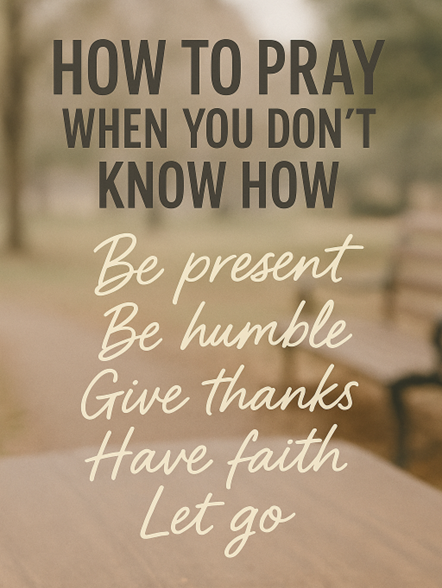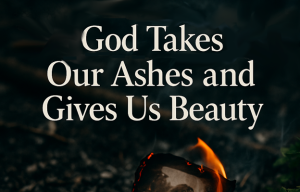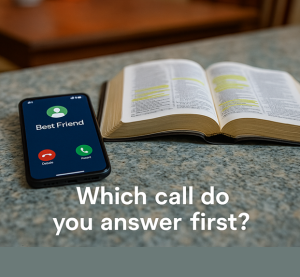A Mighty Tool!
Article written by Melinda Lopez
Most of us have encountered the word prayer many times in our lives. But what is it, really?
The dictionary defines prayer as “a solemn request or expression of thanks to God.” That definition is both simple and profound. Simple because prayer invites us to bring anything—our needs, our gratitude, our thoughts—to God. But also profound, because it requires something from us: purpose, humility, and faith.
This is often where things get complicated. Because we don’t physically see God, it can be hard to believe prayer matters. And if we don’t believe in it, we’re unlikely to make time for it. We wonder, Who am I praying to? What’s the point?
But underneath those doubts, I think the real issue is this: prayer makes us feel vulnerable. And most of us don’t like feeling weak. We want to feel strong. We want to be heard. We want to be seen.
So, we don’t ask. We avoid prayer unless things get really bad—when we’re sick, defeated, or desperate for answers. We turn to it only as a last resort, hoping there’s someone or something out there that might help us.
But prayer is so much more than a last resort. Prayer is a mighty tool—created by God to help us connect with Him. It’s powerful, direct, and always available. To pick it up is an act of courage and humility. It takes courage to admit you need help, and humility to give thanks when it comes.
We need tools for so many parts of life—like the laptop I’m using to write this article. Prayer is a spiritual tool that helps us find strength to keep going, light in the darkness, direction when we’re lost, and peace through gratitude.
And gratitude has a power of its own. When we give thanks, our eyes open to see how blessed we really are. This has been my personal experience with prayer.
I’ve learned to thank God for every blessing—for lessons learned, for the kind people who’ve helped me, for those who’ve loved me well, and most of all, for the gift of life itself.
But how do we pray?
Many people think you have to be in church, kneeling with folded hands and closed eyes. While those postures can be helpful, they’re not required. And sometimes, our attachment to those rituals can keep us from seeing the real heart of prayer.
What matters most is connection. Prayer is about relationship.
I like to think of prayer as a Virtual Private Line (VPL)—a direct, private, and protected line of communication with our Heavenly Father. That means you can pray anytime, anywhere. In church, at home, in your car, on a walk. Sitting, standing, lying down. With eyes open or closed. God hears your heart, not just your posture.
I discovered the power of prayer at a very young age, and I’ve been using it ever since. I’ve seen countless blessings and miracles in my life. One that stands out: A lump in my breast appeared cancerous—two inches long with jagged edges. But after surgery and testing, the doctors were stunned. It was completely benign.
People sometimes ask me what I did to receive blessings and miracles like that. My answer is simple: Pray.
A Simple Guide to Prayer

Here’s a basic framework I use when I pray:
- Be present – Focus your mind and speak from your heart.
- Be humble – Approach God with reverence and respect.
- Give thanks – Acknowledge what He’s already done.
- Have faith – Trust that He hears you and will respond—whether with what you asked for or something better.
- Let go – Surrender fear, control, and the need to dictate timing or outcome.
Let’s make prayer part of our daily life. The more we use this tool, the stronger our hearts, minds, and faith will become.
God already knows your thoughts and feelings. Prayer is how you open the line of communication. Let’s keep that VPL active. Everything you need is already within you—faith. So pray with confidence, knowing that: “...for God all things are possible” (Matthew 19:26, NRSV). Be open to the possibilities.


